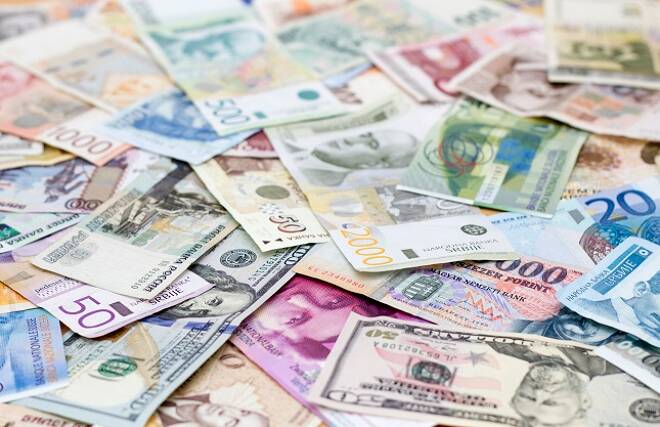Advertisement
Advertisement
Greenback Up Against Yen, but Lower Against Basket of Currencies
By:
The U.S. Dollar had a mixed week, closing lower against most major currencies, but higher against the Japanese Yen and Australian Dollar. The June U.S.
The U.S. Dollar had a mixed week, closing lower against most major currencies, but higher against the Japanese Yen and Australian Dollar. The June U.S. Dollar Index, which is a weighted geometric mean of the dollar’s value relative to other select currencies, finished the week at 98.528, down 0.370 or -0.37%.
A plethora of fundamentals helped generate the price action, they included increased demand for higher risk assets, increased expectations for a Fed rate hike in June, falling commodity prices and optimism over the French presidential election results.
June U.S. Dollar Index
Early in the week, the dollar was under pressure due to weak factory and inflation data. The Personal consumption expenditures (PCE) price index excluding food and energy slipped 0.1 percent in March, the first and largest drop since September 2001. In the 12 months through March, the core PCE price index increased 1.6 percent, the smallest gain since last July.
The Institute for Supply Management (ISM) said its index of national factor activity dropped to a reading of 54.8 last month, the weakest reading since December.
At mid-week, the U.S. Treasury said it was studying the possibility of issuing ultra-long-term bonds. The ISM Index of non-manufacturing activity rose to 57.5 in April from 55.2 the month before. The reading was above expectations of 55.8.
On Wednesday, May 3, the U.S. Federal Reserve kept interest rates unchanged, but downplayed weak first-quarter economic growth and emphasized the strength of the labor market in its statement following the end of a two-day meeting. Traders interpreted the news to mean that the central bank would raise interest rates in June.
On Friday, May 5, the U.S. Labor Department reported that the economy added 211,000 jobs in April, up from a disappointing 98,000 in March. The Unemployment Rate fell to 4.4 percent, its lowest since May 2007 and Average Hourly Earnings rose 0.3%, or seven cents an hour to an annualized pace of 2.5 percent.
Japanese Yen
The Dollar/Yen hit more than six-week highs against the Japanese Yen after the Federal Reserve signaled it was still on track for more interest rate hikes this year. A sharp rise in U.S. equity markets also indicated increased demand for higher risk assets which put additional pressure on the lower-yielding Japanese Yen.
The USD/JPY ended the week at 112.667, up 1.178 or +1.06%.
Australian Dollar
The Australian Dollar was pressured all week by thoughts of lower domestic interest rates, a steep drop in commodity prices and increased expectations of a Fed rate hike in June.
The AUD/USD closed the week at .7413, down 0.0073 or -0.98%.
The Reserve Bank of Australia left its cash rate unchanged at a historic low of 1.5%. This news was widely expected. The central bank also signaled that it would maintain its steady interest rate policy in an effort to promote sustainable economic growth and meet the central bank’s inflation target over time.
A steep drop in gold, copper and iron ore also pressured the Australian Dollar.
New Zealand Dollar
The New Zealand Dollar posted a two-sided trade last week before closing higher. Early in the week, the government reported a 1.2% rise in the Employment Change. Investors were looking for a 0.8% increase. The Unemployment Rate fell to 4.9% from 5.2%, beating the 5.1% estimate.
The NZD/USD settled the week at .6916, up 0.0057 or +0.83%.
Most of the gain came on Friday in reaction to an Inflation Expectations report which came in at 2.2%, up from 1.9%.
About the Author
James Hyerczykauthor
James Hyerczyk is a U.S. based seasoned technical analyst and educator with over 40 years of experience in market analysis and trading, specializing in chart patterns and price movement. He is the author of two books on technical analysis and has a background in both futures and stock markets.
Advertisement
